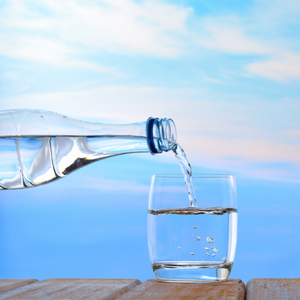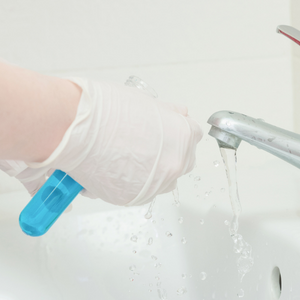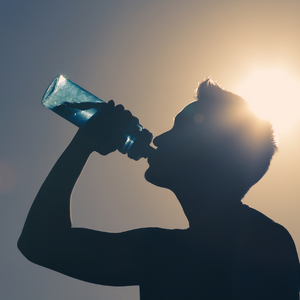Drinking water quality is essential for foodservice operations. Regular testing helps ensure that the water used in all facets of businesses is safe for consumption and meets regulatory standards. By understanding why and how to test drinking water, operators can take steps to protect their customers, staff, and business from potential contamination risks. In this article, we'll discuss why it’s important to regularly test drinking water, the types of tests that should be performed, and how to interpret the results. With this information, establishments can make informed decisions about their drinking water to protect their patrons and employees.
Why Is Testing Water Quality Important?
Testing drinking water quality is important in food operations to ensure that the water being used is free from contaminants and pollutants. Poor-quality drinking water can be harmful to workers and customers, leading to illnesses and other health issues, such as cholera, diarrhea, hepatitis A, and even polio. Other health issues and chronic diseases include:
- Cancer
- Parkinson’s disease
- Cardiovascular disease
- Liver and kidney problems
- Neurodevelopmental effects
- Immune and reproductive system complications
Reasons Food Operations Use Water
Water is used for many purposes in food operations. Its purpose is not only for drinking but also for:
- Washing ingredients- such as fruits and vegetables
- Added to recipes that call for water
- Cleaning and sanitation purposes
- Washing dishes and utensils
- Handwashing
Common Problems With Water in Food Operations
Common problems with water in food operations include a poor supply of water and excessive chlorine or chemicals. Contamination can occur from various sources such as agricultural runoff, industrial waste, human and animal waste, sewage leaks, and other sources that can make their way into the drinking water supply. Poor water supply can lead to unreliable access to clean water for drinking and food production, resulting in food and water not being up to par with safety protocols. Excessive chlorine or chemicals in water may affect the food's flavor and spoil the food if too high of levels are present.
Primary & Secondary Drinking Water Regulations
The U.S. Environmental Protection Agency (EPA) has set regulations for various contaminants found in public drinking water, including chemicals that cause diseases. The national primary drinking water regulations include standards and treatment techniques that public water systems must follow to keep drinking water safe to consume. The national secondary drinking water regulations are guidelines to help public water systems monitor their drinking water that is not related to health issues - such as taste, color, and odor. The contaminants listed for this regulation are not considered detrimental to human health. It is understood that if your water appears cloudy or colored, and even tastes or smells bad, it can lead many people to avoid drinking your water. This makes it necessary to not only test your water quality for harmful contaminants but also to have your water looking clean and clear.
Properly Test & Monitor Water Quality
Since water plays a fundamental role in the safety of food production, it is vital to test and monitor your water quality properly. Drinking water must be completely free from unwanted taste, odor, color, and other impurities. These impurities could severely endanger the health of your consumers and harm drink and food quality. To ensure that your drinking water is free from toxic contaminants, proper testing methods should be initiated. A great way to test your drinking water is by using water test strips.
Drinking water test strips can be used to test water from the tap, ground, and well. They also provide accurate and instant results and have an easy-to-use design. With drinking water test strips, all you have to do is dip the strip in a sample vial for about 2 seconds. After, lightly shake off any excess water left of the strip and place the handle of the strip at the bottom of the color chart facing upwards. Begin to compare the results from your test strip with the color chart provided.
How Often Should I Test My Water?
Water should be tested yearly for levels of contaminants without fail, even if there is no suspicion of any. In addition, if you have a new well, or replaced or repaired pipes and pumps- you need to test your water again. Coliform is a harmful bacterium that can linger in drinking water and is commonly found in the environment and feces of all warm-blooded animals. Other contaminants you need to look for when testing your drinking water are nitrates, total dissolved solids, lead, fluoride, and pH.
Test Strip Maintenance
To preserve the quality of your drinking water test kits, it is crucial to know how to store and care for them. Below are steps to take to maintain your test strips in good condition at all times:
- Store strips in a cool, dry area away from sunlight.
- Avoid touching the test sections of the strip to prevent contamination.
- When not in use, keep the cap closed tightly.
- Do not place wet fingers inside the bottle.
- Keep the desiccant pouch inside.
Implement Good Maintenance Practices
Good drinking water maintenance practices are important to ensure the quality and safety of drinking water used in food operations. Of course, it begins with regularly testing the water for bacteria is essential to identify any potential contamination. Additionally, it is important to frequently inspect and maintain all equipment that supplies or treats drinking water to ensure that it is functioning correctly and not introducing any additional contaminants. Finally, good sanitation techniques, such as wearing protective clothing when handling food and washing hands regularly can help prevent the spread of contamination. By taking these steps, organizations can ensure that their drinking water is of high quality and safe for everyone involved in food operations.
Clean Water Is A Right
Ensuring the quality and safety of drinking water used in food operations is key to protecting workers, customers, and the food being produced. Contamination, poor water supply, and excess toxic chemicals can all lead to other issues that could be harmful to people and food. Proper testing and monitoring of water quality, using appropriate sanitation techniques, and applying good maintenance practices can help prevent these issues from occurring. By taking these steps, organizations can ensure that their drinking water is safe to use.








